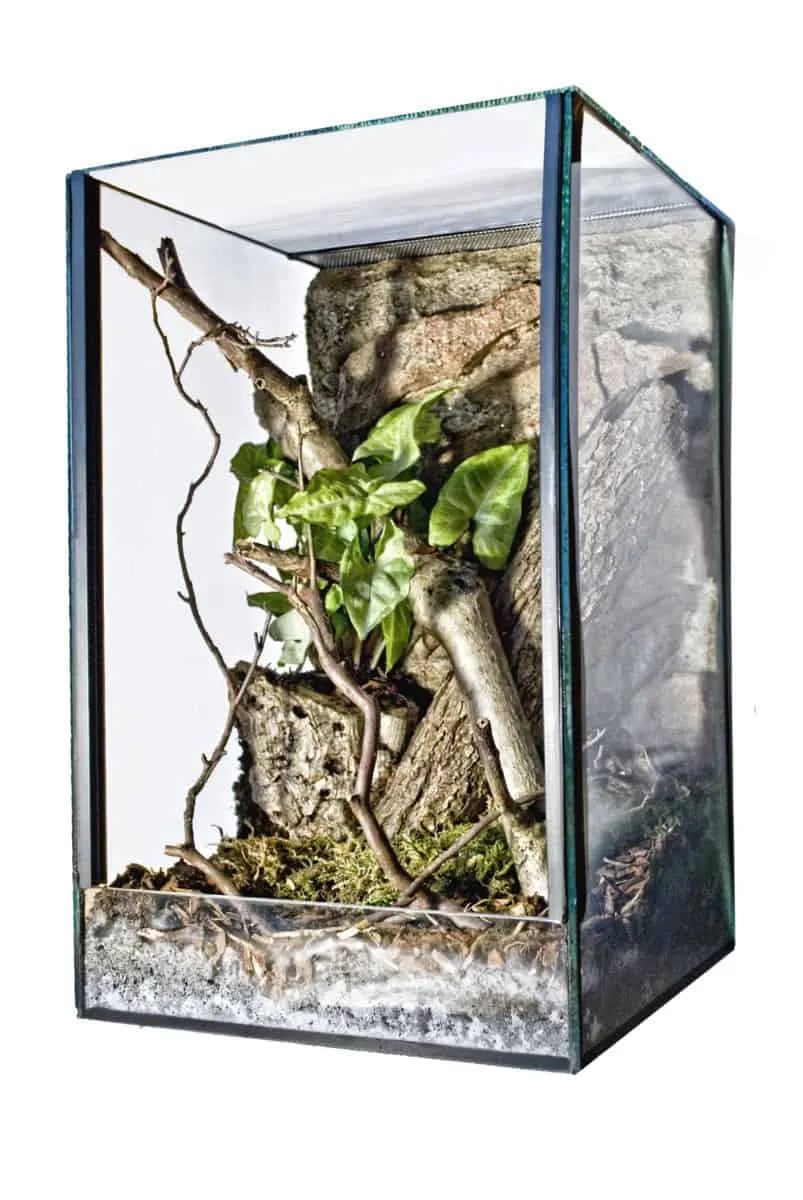Jamie’s Top 5 Best Tarantula Enclosures
Choosing the right enclosure is crucial for the health and happiness of your tarantula. With so many options available, it can be overwhelming to select the perfect home for your eight-legged friend. This guide, curated by Jamie, provides insights into the best tarantula enclosures on the market, ensuring you make an informed decision. We’ll explore various factors, from size and material to ventilation and accessories, to help you create an ideal habitat. Jamie’s expertise will guide you through the essential aspects of selecting a tarantula enclosure, ensuring your pet thrives in a safe and comfortable environment. Let’s dive into Jamie’s top picks!
Why Enclosure Matters for Tarantulas
The enclosure is not just a container; it’s a complete ecosystem for your tarantula. It influences everything from the spider’s physical well-being to its psychological state. A well-designed enclosure replicates the natural environment of the tarantula, allowing it to thrive. Improper enclosures can lead to stress, molting problems, and even premature death. Understanding the importance of the right setup is the first step toward responsible tarantula ownership. Proper housing is essential to providing a tarantula with a long, healthy life. Inadequate enclosure can cause various health issues.
Understanding Tarantula Needs
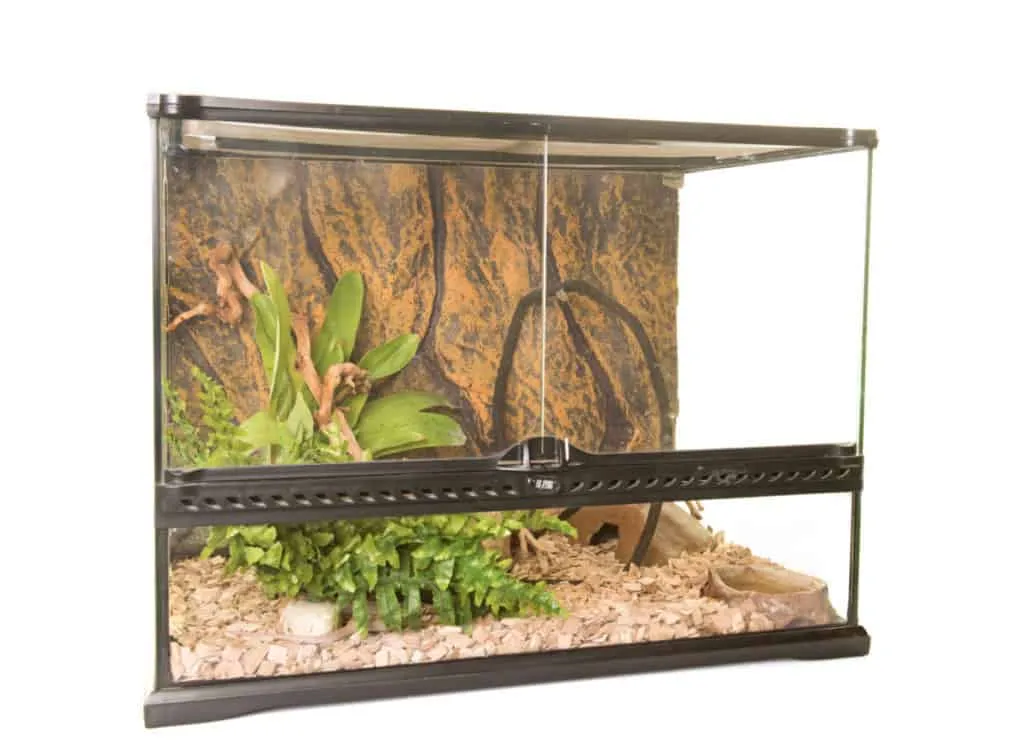
Tarantulas have specific needs that must be met to ensure their well-being. These needs include appropriate temperature, humidity, ventilation, and substrate. Different species have different requirements, so researching your specific tarantula’s needs is vital. Some tarantulas are terrestrial, requiring more floor space, while others are arboreal and need height for climbing. Accurate knowledge about a species will help in choosing the proper enclosure type. Furthermore, understanding their natural habitat will help you replicate the optimal living conditions.
Impact of Enclosure on Tarantula Wellbeing
A well-designed enclosure reduces stress and provides enrichment, allowing the tarantula to exhibit natural behaviors. Poorly designed enclosures can lead to stress, which manifests in various ways, such as hiding constantly, refusing food, or displaying aggressive behavior. A proper enclosure allows the tarantula to thrive, promoting better health and longer life. Consider the material and design of the enclosure as factors. Ventilation, humidity, and temperature play crucial roles in the wellbeing of your pet.
Top Pick 1 Jamie’s Favorite Tarantula Enclosure
Jamie’s first pick offers a perfect blend of functionality and aesthetics. This enclosure is designed with the tarantula’s needs in mind, featuring excellent ventilation and a secure locking mechanism. Made from durable, clear materials, it provides unobstructed views of your tarantula. It comes in various sizes, making it suitable for different tarantula species. This enclosure prioritizes both the tarantula’s safety and the owner’s convenience, offering easy access for feeding and cleaning. This first enclosure also provides options for adding decorations and is a great starter enclosure.
Features and Benefits
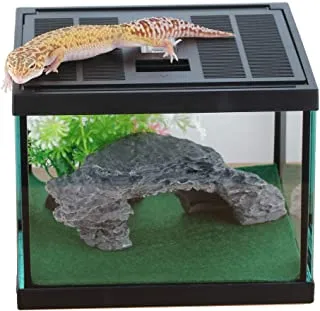
Key features include optimal ventilation, a secure lid, and durable construction. The enclosure’s design promotes proper air circulation, preventing the buildup of harmful bacteria. The secure lid prevents escapes, ensuring the safety of both the tarantula and the household. The clear material allows for easy observation of your tarantula. It’s often built from acrylic or other durable plastics, designed to withstand regular use and handling. It also usually comes with pre-drilled holes for accessories.
Pros and Cons
Pros include excellent ventilation, ease of cleaning, and secure design. Cons may include a higher price point compared to some basic enclosures and the need to purchase additional accessories. Some designs require assembly. Make sure to consider your tarantula’s requirements when weighing the pros and cons of this enclosure. The transparent walls may provide your tarantula with too much light; be sure to take measures to provide a safe environment for the tarantula.
Top Pick 2 Another Excellent Enclosure
This enclosure is a great option for those seeking a cost-effective yet functional solution. It prioritizes simplicity without sacrificing essential features. Made from high-quality materials, it offers good ventilation and secure closures. It is available in various sizes, providing flexibility for tarantula owners. The design is optimized for both the tarantula’s comfort and ease of maintenance. It generally features a simple, uncluttered design that focuses on providing a safe and secure environment. It also includes a variety of accessories.
Features and Benefits
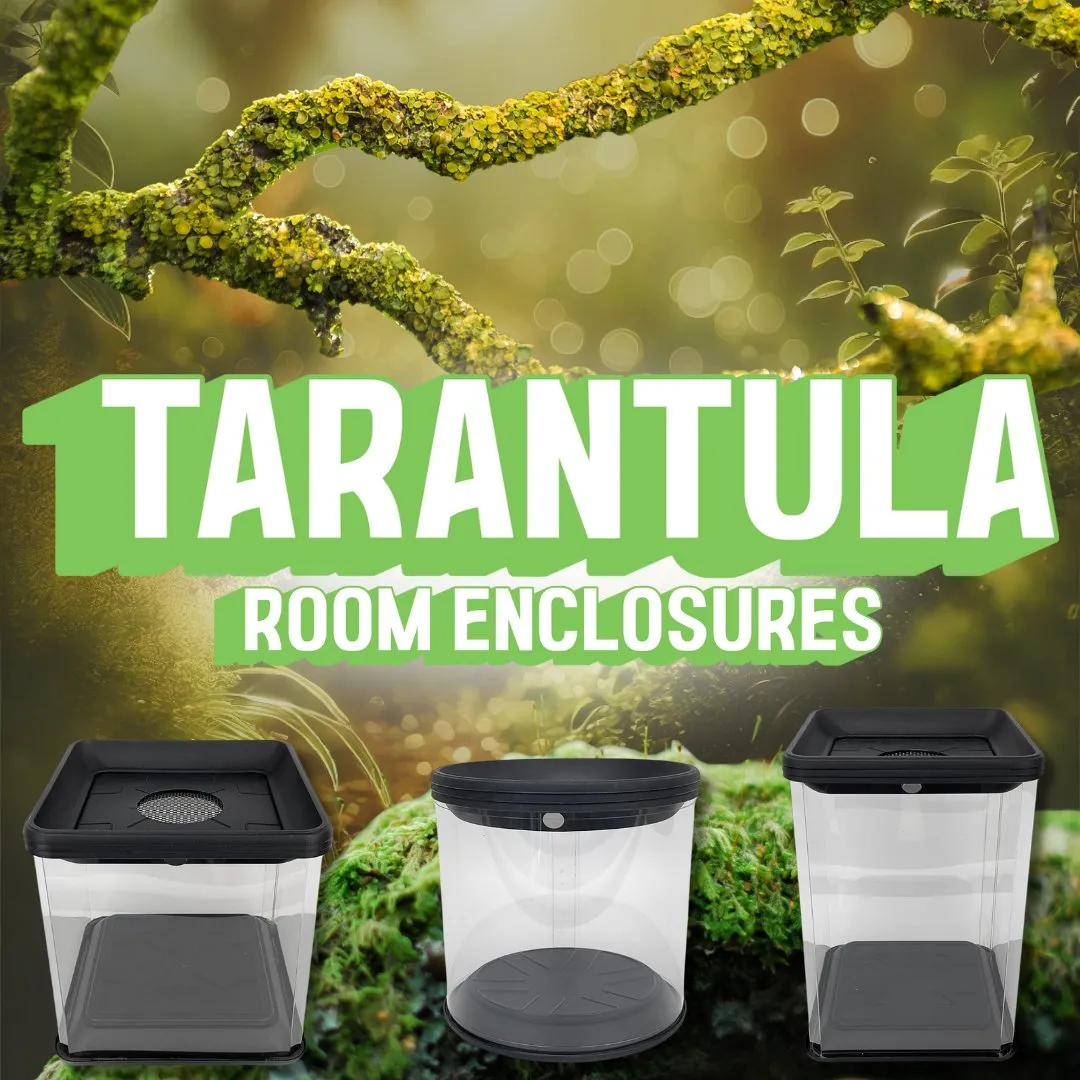
Key features include affordability, easy maintenance, and good ventilation. Benefits include a budget-friendly price, making it accessible for all tarantula owners. Easy access for cleaning and maintenance makes it a practical choice. It is usually built from transparent plastic or glass, allowing easy observation. It typically includes a lid with a secure locking mechanism, which prevents escapes. The design also allows for easy installation of accessories.
Pros and Cons
Pros include affordability and ease of use. Cons may include less aesthetic appeal compared to premium enclosures and limited accessory options. The size of the enclosure will be important to consider when purchasing. Be sure to research your tarantula’s specific needs when selecting an enclosure. This can be an excellent option for beginners, but make sure it meets all the needs of your pet.
Top Pick 3 Great Enclosure Option
For tarantula owners who value customization and a natural look, this enclosure is a fantastic choice. It features a versatile design that allows for easy modification and the addition of natural elements. The enclosure is made from durable materials. It provides excellent ventilation and a secure environment for your tarantula. It has a naturalistic aesthetic, making it visually appealing in any home. The enclosure allows for the creation of a thriving ecosystem. It’s often constructed with features such as a screen top and numerous entry points.
Features and Benefits
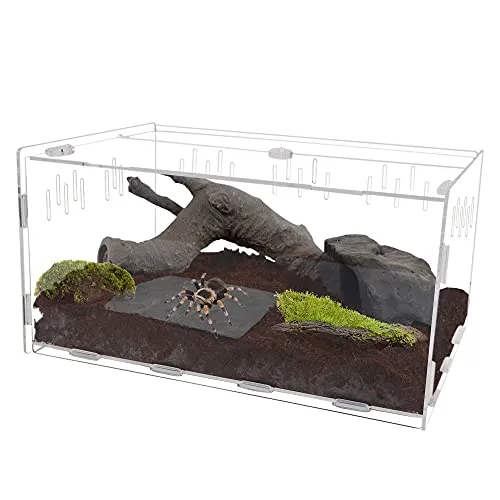
Key features include customization options, excellent ventilation, and a naturalistic design. The ability to add substrate, hides, and plants provides enrichment for the tarantula. The design mimics the tarantula’s natural habitat, reducing stress. It will often come with a secure locking mechanism and pre-drilled holes. These enclosures often incorporate features that allow for the introduction of microfauna, such as springtails, to create a complete ecosystem for the tarantula.
Pros and Cons
Pros include the ability to create a custom environment and the aesthetic appeal. Cons may include a higher price point due to the premium design. It may require some effort to set up and maintain, but this is an investment in your pet’s well-being. It’s important to consider your tarantula’s specific needs when selecting an enclosure. This can be a perfect enclosure for more experienced owners who want to provide the best for their pet.
Top Pick 4 Another good Enclosure Option
This enclosure option focuses on providing a safe and secure environment. It has a practical design that prioritizes the tarantula’s safety. Featuring a sturdy construction and a secure lid, this enclosure provides peace of mind for both the tarantula and the owner. It provides excellent ventilation and easy access for maintenance. It is designed with both the tarantula’s well-being and ease of care in mind. It’s a reliable option for those seeking a straightforward enclosure.
Features and Benefits
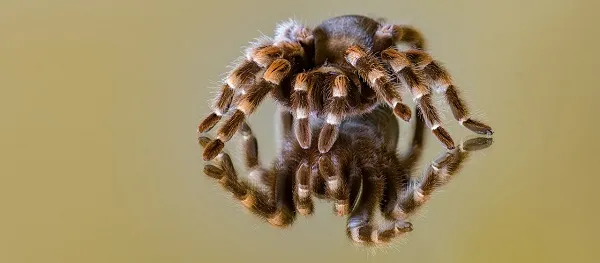
Key features include sturdy construction, secure lid, and good ventilation. Benefits include peace of mind knowing your tarantula is safe and secure. Easy maintenance due to the design of the enclosure. Usually built from durable, non-toxic materials. The locking mechanism is designed to prevent escapes and provide easy access for cleaning. The design of the enclosure will typically include a screen top for ventilation.
Pros and Cons
Pros include the focus on security and practicality. Cons may include less emphasis on aesthetics and limited customization options. Be sure to choose the right size for your pet. This is a great option for those who value safety and ease of care above all else, making it a great choice for beginners. The simple design allows for easy cleaning and maintenance.
Top Pick 5 Last Enclosure Option
This is Jamie’s final pick, offering a balance of features and value. It combines essential elements of a good enclosure with a focus on durability and ease of use. Featuring a clear design for easy viewing and a secure lid, this option offers a practical and reliable home for your tarantula. It is also very affordable. This enclosure is designed to simplify the process of tarantula care. It also comes with all the basic elements needed to make your pet’s environment comfortable.
Features and Benefits
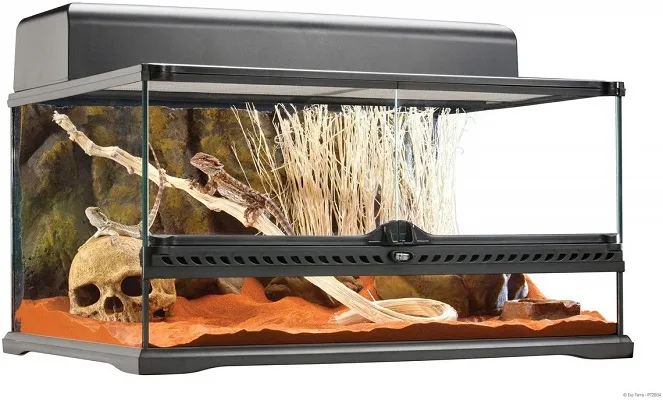
Key features include a clear design, a secure lid, and an affordable price point. Benefits include easy viewing of your tarantula and simplified maintenance. The design includes features for easy feeding and watering. Made from safe, non-toxic materials. Typically includes a ventilation system that is suitable for most tarantula species.
Pros and Cons
Pros include the affordability and ease of maintenance. Cons may include limited customization options and a basic design compared to more premium enclosures. Be sure to take your tarantula’s size and species requirements into account when choosing. This enclosure is a solid choice for beginners or those seeking a straightforward, reliable enclosure for their tarantula. It is a cost-effective and practical option.
How to Choose the Right Enclosure
Selecting the right enclosure involves careful consideration of several factors. The size, material, ventilation, and accessories all play crucial roles in ensuring a healthy and happy tarantula. Taking the time to research and understand your tarantula’s needs will lead to a successful outcome. This section offers insights on how to make the best choice for your pet’s needs. Making the correct choice is important for the well-being of the spider.
Considering Tarantula Species
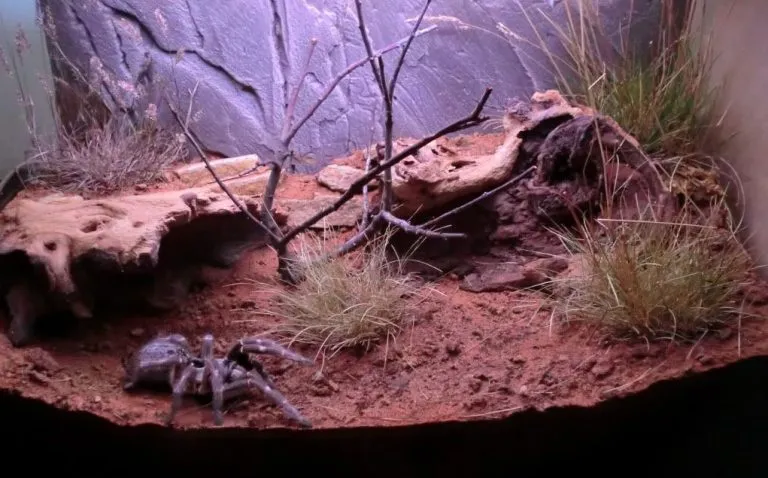
Different tarantula species have unique needs. Terrestrial tarantulas, like the Chilean Rose, require more floor space, while arboreal species, such as the Greenbottle Blue, need more vertical space for climbing. Researching your specific species is the first step. Understanding their natural habitat helps in replicating appropriate environmental conditions. Consider factors such as humidity and temperature. Correctly identifying the species will allow you to make informed decisions about the enclosure.
Sizing Your Enclosure
The enclosure’s size directly impacts your tarantula’s well-being. Too small an enclosure can restrict movement and cause stress, while too large an enclosure can make it difficult for the tarantula to find food and feel secure. As a general rule, the enclosure should be at least twice the tarantula’s leg span in width and length. It is important to measure your tarantula to ensure the correct fit. Make sure to plan for the tarantula’s future growth and choose an enclosure that will accommodate its adult size.
Enclosure Material Options
Enclosures are typically made from glass, acrylic, or plastic. Glass enclosures are durable and offer excellent visibility. Acrylic enclosures are lightweight, transparent, and less prone to breakage. Plastic enclosures are often a more affordable option. Each material has its advantages and disadvantages. The material should be non-toxic. Make sure to research the best option for your needs, considering factors like ventilation and ease of cleaning. Ventilation is a very important part of choosing the right material.
Ventilation and Humidity
Proper ventilation and humidity are essential for tarantula health. Good ventilation prevents mold and bacterial growth, while appropriate humidity levels support molting. Most enclosures have ventilation holes or a screen top. The humidity needs depend on the species. Monitor the enclosure’s humidity levels. Use a hygrometer to ensure the enclosure is within the ideal range. Adjusting the ventilation and humidity will ensure your tarantula’s overall well-being.
Essential Enclosure Accessories
Creating an ideal habitat involves more than just the enclosure itself. Essential accessories enhance the tarantula’s environment and promote its well-being. These accessories provide enrichment. They also ensure the tarantula has everything it needs. This section highlights the most important accessories for creating a safe and thriving habitat.
Substrate Selection
Substrate provides a comfortable surface for your tarantula and helps maintain humidity levels. Common substrate options include coconut fiber, peat moss, and vermiculite. The substrate should be non-toxic and retain moisture. Consider the tarantula’s species when selecting substrate. Make sure it is easy to clean and replace. Deep substrate is important for burrowing species. Avoid using substrates that can harm the spider. Be sure that you choose the best substrate for your pet.
Hides and Decorations
Hides provide security and a place for the tarantula to retreat. Decorations add enrichment and can mimic the tarantula’s natural habitat. Popular options include cork bark, artificial plants, and rocks. Select decorations that are safe and non-toxic. Avoid sharp objects that could injure the tarantula. Providing a secure hiding place reduces stress. The decorations create a more natural environment, promoting the tarantula’s well-being. This is an important step in providing a suitable habitat.
Water and Feeding Dishes
Providing a shallow water dish ensures that your tarantula has a constant water source. Choose a dish that is easy to clean and does not pose a drowning hazard. Feeding dishes can help keep the enclosure clean. Position these dishes to make them easily accessible to the tarantula. Clean the dishes regularly to prevent mold and bacterial growth. The water should be fresh. Making sure your pet has access to water and food is essential.
Conclusion
Choosing the best tarantula enclosure requires careful consideration of various factors, including species, size, material, and accessories. By following Jamie’s expert recommendations and incorporating essential elements, you can create a thriving habitat for your tarantula. Remember that a well-designed enclosure is essential for the well-being and longevity of your eight-legged friend. With the right enclosure, you can ensure your tarantula’s health and happiness. Your tarantula will thank you for providing a safe and comfortable home!
